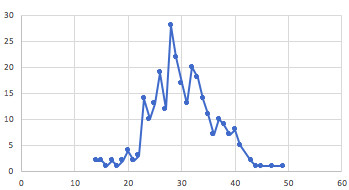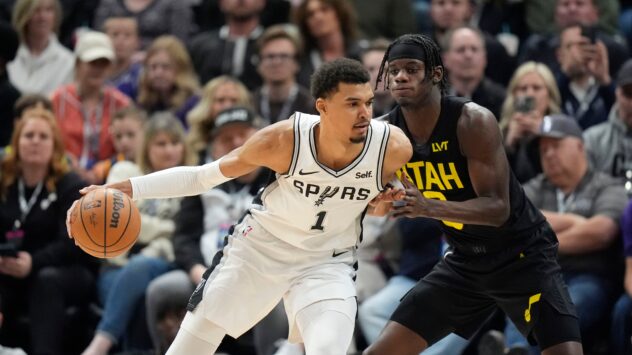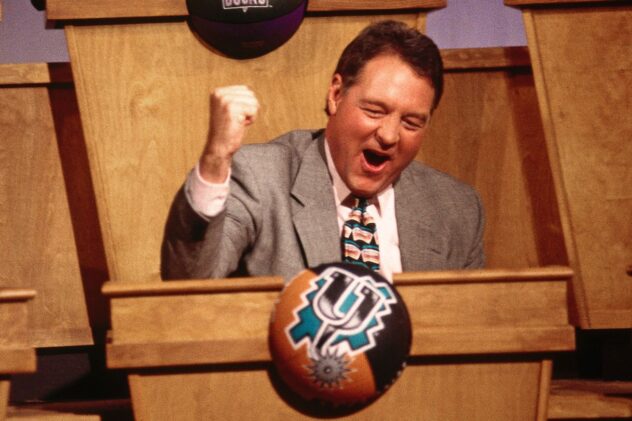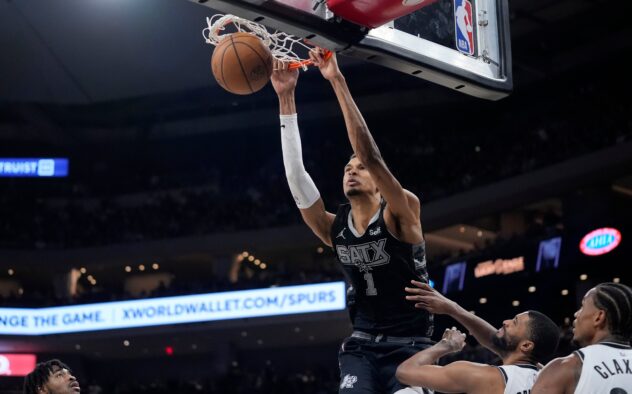What defines as a “good” defensive quarter for today’s Spurs

The 2022-23 Spurs have all but locked the worst defensive rating in NBA history, currently sitting just under 120 points per 100 possessions, a record you can probably bet on getting beaten next season, ideally by someone else. They’ve allowed 130 or more points 21 times and held teams to under 100 just 5 times.
Gregg Popovich shrugged last week when asked what it takes for any team to slow today’s offenses. “We used to talk about holding opponents to 22 a quarter and keep it under 100 and all that stuff — that’s all baloney now.”
The Spurs coach has fielded some version of the same question for a while now at home and on the road. His shrug feels somewhat loaded, colored by the modern game’s supercharged offenses, his open disdain for the three-point shot and, presumably, his own team’s particular challenges in slowing opponents down.
“Just too many threes. Too many talented people. Lots of teams have five guys on the court that can make threes at certain points in the game. You are not going to be able to do that. Defense is still important, especially when playoffs come, but you still have to be able to score.”
This runs a bit against most of Pop’s run in San Antonio, when the Spurs were a staple among the league’s top defenses. At least until recently, the term “stops in demand” was part of the locker room lexicon as a way of talking about digging their heels in when the moment called for it. But that was a different Spurs core, playing in a different era, and it would take way more words and a better brain than mine to unpack what kind of personnel and tactics Pop and Co. will need to claw back to that tier in the years to come.
Instead, a simpler question: what’s the cur version of 22? What might the coaching staff underline on the locker room white board or celebrate post-game after a job well done?
“I don’t even want to say the number,” said Pop with a smile when asked. “It’s embarrassing.”
Of course, the only thing more embarrassing than being a Hall of Fame coach lowering your own long-established expectations is being a blogger who speculates about it. Hi. Instead of following up on my own question, I’ve elected to use a combination of napkin math and context to look at what “Good” means for the Spurs in 2023 and try and show our work along the way.
For most of the Big Three era, the Spurs hovered between 88 and 98 points allowed per game. We’ll omit 2003-04’s godlike group that held opponents to 84 points. Taking the average at 93, a 22-point quarter would represent roughly 23.6% of that total, a solid, above-average effort compared for a team that already asked a lot of itself.
This year, the Spurs give up around 122 points per game. 23.6% of that would be 28.8. Here’s every quarter of points allowed (x-axis) projected on a graph based on how many times the Spurs gave up that total (y-axis).
That peak is right at 28: the most common total allowed by the Spurs this season. Could that be occurring more often due to the team more acutely aware of it as a goal, the group on the floor bearing down in the final possessions of a period and manifesting one of those stops on demand in order to reach it? Maybe. Are we already overthinking this? No, not at all.
It’s also worth being mindful of the Spurs’ lowkey and occasionally high key methods of fielding a, let’s say, slightly less competitive team this season. Experiments with rookie roles, lineup inconsistency and a healthy use of DNPs have made the opponent scoring totals perhaps even more inflated than they should be. If that’s the case, should we shave off a point or two from our math to account for games in which San Antonio was more actively competitive?
Then there’s Pop’s word choice: “embarrassing”. Is 28 all that embarrassing? Isn’t 30 more embarrassing? 29 is as well, sure, but it’s such a repellent number that I don’t think any tactical mind could stomach looking at it and cheering it on for an entire season. 32 definitely is, and that’s where you see another spike in the chart, but the Spurs are accomplishing that feat way too often. 26 doesn’t seem all that embarrassing, but I’m also not an NBA coach.
Some might make the case for 27, which has a lot going for it. 27 over 4 quarters is still higher than the best defense in the league (the Cavs) allows a night, making it ostensibly realistic. Also, according to NumerologySign.com, the number 27 “suggests that you are going through a significant period of learning and growth, and to look out for the lessons in what is happening with you right now.” So there’s that. But today’s managers are asked to assign S.M.A.R.T. goals, the ‘A’ being ‘achievable’, or ‘attainable’. I can’t remember. The Spurs have held teams to 27 or fewer points in 89 quarters this season, or less than 31% of the time. Would that be infrequent enough to discourage a young group that you’re trying to mold and inspire?
Almost by default, we have to settle on 28, here, a whole 6 points north of the previous standard that the Spurs once held themselves to — or exactly two more three-point shots, as Pop might look at it. I feel good about all this, don’t you?
















